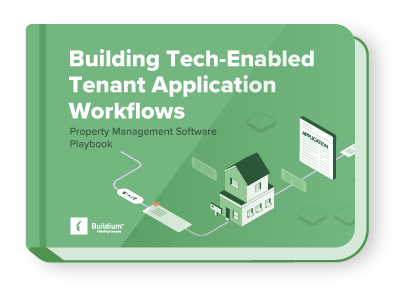As a property manager, you need to keep rental agreements clear, fair, and legally sound. The same holds true for pet addendums. Introducing a pet addendum can save you a lot of headache by outlining the expectations, responsibilities, and rules for tenants with pets. It helps avoid misunderstandings and legal issues.
In this post, we’ll explain the importance of a pet addendum, what it should include, and how property managers can incorporate it into their leases. By the end, you’ll know why this document benefits both your tenants and your properties.
What Is a Pet Addendum?
A pet addendum is an additional document attached to a lease agreement that specifies the terms and conditions related to a tenant’s pets. It is legally binding and part of the overall lease agreement.
While a pet policy might outline general guidelines for pet ownership (such as no aggressive breeds allowed or a limit on the number of pets), a pet addendum includes concrete, enforceable rules that both parties must follow. It clarifies the rights and obligations of both the tenant and property manager regarding pets.
A pet addendum differs from a pet policy because the pet addendum becomes an official part of the lease. If it’s not signed by the tenant and property manager, the terms are not legally valid. This document manages pets responsibly within your property, and everyone understands their roles.
Key Elements of a Pet Addendum
When creating a pet addendum, include specific details to protect your property and outline the tenant’s responsibilities. Here are the key components that should be part of any pet addendum:
- Pet Types and Breeds Allowed: Specify which types of pets are allowed. For example, you may permit cats, dogs, or certain types of smaller animals. You can also list breeds or species that are prohibited (such as aggressive dog breeds).
- Pet Deposits or Fees: Include details about any required pet deposits or monthly pet fees. These cover potential damages or extra wear and tear caused by the pet. Specify if the deposit is refundable.
- Tenant Responsibilities: Outline the tenant’s duties regarding pet care and behavior. Tenants clean up after their pets, prevent noise disturbances, and ensure their pets don’t cause property damage.
- Limitations on the Number of Pets: Specify how many pets are allowed per tenant. This helps avoid overcrowding and makes pets manageable within your property.
- Pet Insurance: Some property managers require tenants with pets to carry renters’ insurance that covers pet-related damage or injuries. Clearly state this in the addendum.
- Behavior and Noise: Set expectations for noise, such as excessive barking or meowing, and outline what happens if complaints are received. Include rules regarding pet behavior in common areas.
- Health and Safety Guidelines: For the safety of other tenants, include rules about vaccinations, pest control, and keeping pets healthy.
All pet addendums must follow local laws and fair housing regulations. Some jurisdictions may have breed restrictions or prohibit charging certain fees. Make sure your addendum complies with local laws to avoid any legal issues and talk with a legal professional whenever you’re in doubt about specifics.
Why Is a Pet Addendum Important for Property Managers?
Including a pet addendum in your lease agreement is useful for several reasons. Here are some of the key benefits:
- Reducing Liability: Pets, especially larger animals, can pose a risk of injury or property damage. A pet addendum makes tenants financially responsible for their pets, protecting the property manager from liability in accidents or incidents.
- Preventing Misunderstandings: Without a pet addendum, tenants may not fully understand the expectations regarding pet care, behavior, or damage. A clear, signed addendum reduces the chance of disputes and helps everyone understand their responsibilities.
- Protecting the Property: Pets can cause significant damage to rental units if not properly managed. Pet deposits or fees help to cover the cost of any repairs, and limiting the number of pets can prevent overcrowding, which can lead to excessive wear and tear.
- Setting Clear Expectations: A well-written pet addendum sets clear boundaries for tenants, making them understand what is expected in terms of pet care, behavior, and property maintenance. This can prevent issues like excessive noise, pet waste, or property damage.
- Adhering to Legal Requirements: If your lease does not properly address pets, you might face legal challenges in the event of an issue. A legally binding pet addendum protects all parties and provides a written agreement in case of disputes.
How to Implement a Pet Addendum
Adding a pet addendum to your lease agreement is a straightforward process. Create a custom addendum based on your property’s specific needs or use a template. Here’s how to do it:
- Determine the Terms: Decide what rules and fees will apply to tenants with pets. Consider factors such as breed restrictions, the number of pets allowed, and any additional fees for pet damage or cleaning.
- Use a Template or Draft Your Own: Many property management platforms or legal service providers offer pet addendum templates that you can easily adapt to your needs. If you prefer to draft your own, make sure it is clear, concise, and covers all the necessary details.
- Follow Legal Requirements: Double-check that the pet addendum complies with local laws, including those related to fair housing or breed restrictions. It’s important that you don’t inadvertently violate any legal requirements.
- Make Sure Tenants Understand: Before tenants sign the addendum, explain the rules and fees. Encourage open communication so they know exactly what is expected of them.
- Keep Records: Once the addendum is signed, store it with the tenant’s lease agreement and make it easy to reference in the future. Consistent record-keeping helps prevent disputes and can be useful if legal issues arise later on.
Frequently Asked Questions
What should be included in a pet addendum?
A pet addendum should include details regarding pet deposits or fees, breed restrictions, the number of pets allowed, rules for pet care and behavior, and any legal compliance requirements. Clear guidelines help tenants understand their responsibilities and prevent issues.
Can a landlord refuse to allow pets?
Yes, a landlord can refuse to allow pets, but they must follow local laws and fair housing regulations. Some jurisdictions may have specific rules about breed restrictions or prohibit charging certain fees. Always make sure your pet policy is legally compliant.
How can a pet addendum prevent property damage?
A pet addendum can prevent property damage by setting clear expectations for pet care and behavior, requiring pet deposits or fees to cover potential repairs, and limiting the number of pets to avoid overcrowding. This helps maintain the property in good condition and prevents excessive wear and tear.
Read more on
